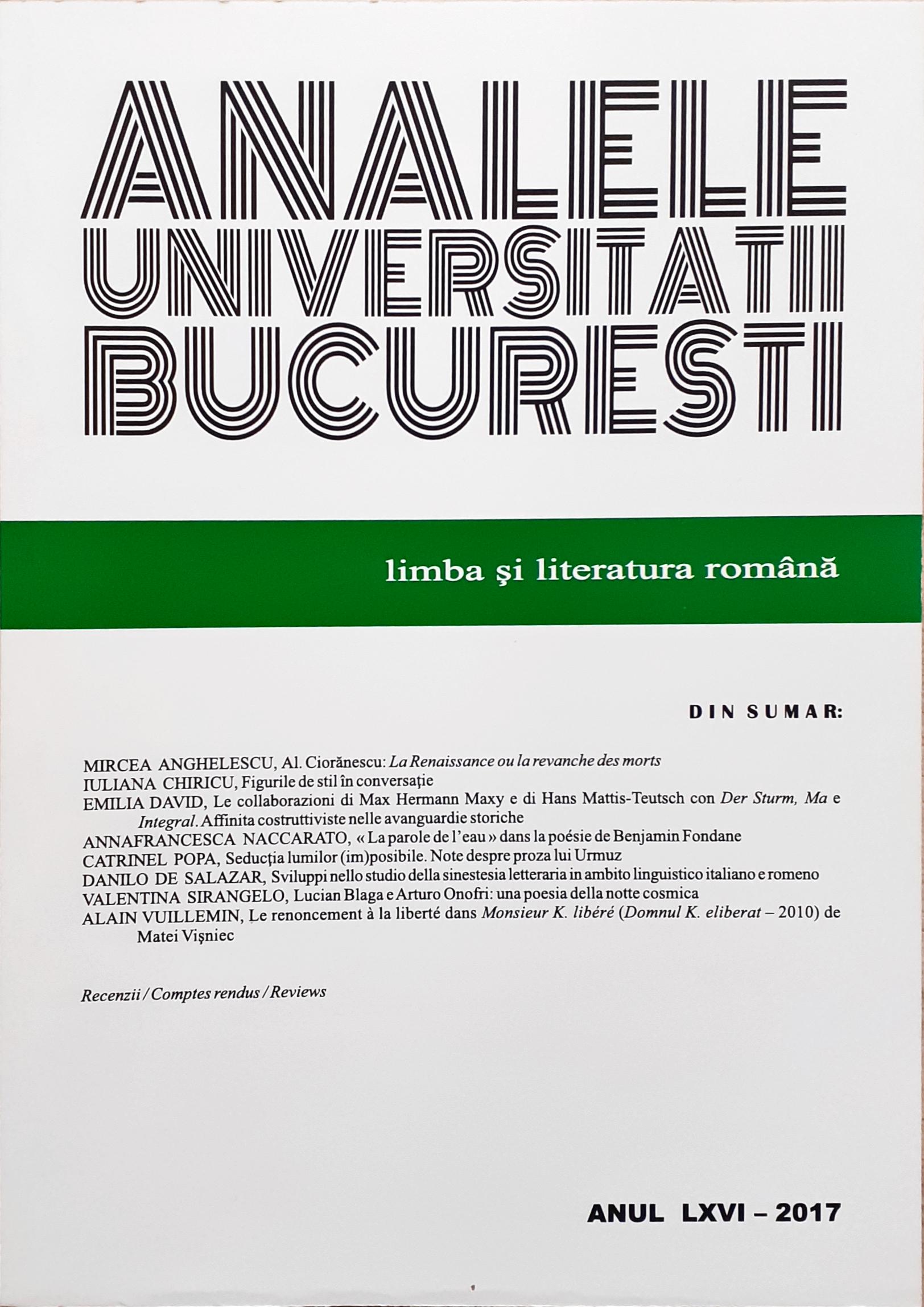Le collaborazioni di Max Hermann Maxy e di Hans Mattis-Teutsch con Der Sturm, Ma e Integral. Affinita costruttiviste nelle avanguardie storiche
The Contributions of Max Hermann Maxy and Hans Mattis-Teutsch to Der sturm, Ma and Integral. Constructivist Affinities between the Historical Avant-gardes
Author(s): Emilia DavidSubject(s): Comparative Study of Literature, Theory of Literature, History of Art
Published by: Editura Universităţii din Bucureşti
Keywords: Romanian Avant-garde; Constructivism; Expressionism; Futurism; Dadaism;
Summary/Abstract: This paper examines the cultural exchanges that took place between the directors andseveral leading contributors of a few literary journals that were active within three innovativeEuropean art movements in the early decades of the twentieth century: the Constructivist and “Integralist” circle founded in Bucharest around the literary reviews The Contemporary, 75 HP, Point and Integral, the Expressionists supported in Berlin by the magazine Der Sturm and the Hungarian movement, represented by Ma. Before a distinctly avant-garde group was formally constituted in Romania, the artists Max Hermann Maxy and Hans Mattis-Teutsch had managed to establish close relations with Der Sturm circle, while the latter had also joined the group Ma. The first two parts of this paper will shed light on the most important aspects of the initial phase of this triple collaboration. The birth proper of the Romanian avant-garde, in 1924, announced by the publication of the “Activist Manifesto for Youth” in Contimporanul, occasioned subsequent cultural exchanges between the editors and the representatives of the movements mentioned above. It is particularly interesting that these cultural connections were possible thanks to the fact that all the three artistic circles included in their own aesthetic program Constructivist affinities, which they adapted according to their own ideological needs, combining it with other more or less iconoclastic elements and trends. Therefore, the third part of the paper will analyse several occasions on which these artistic groups communicated successfully between 1924 and 1927, in order to cultivate the belief of a new art.
Journal: Analele Universităţii Bucureşti. Limba şi literatura română
- Issue Year: LXVI/2017
- Issue No: 66
- Page Range: 41-58
- Page Count: 18
- Language: Italian

